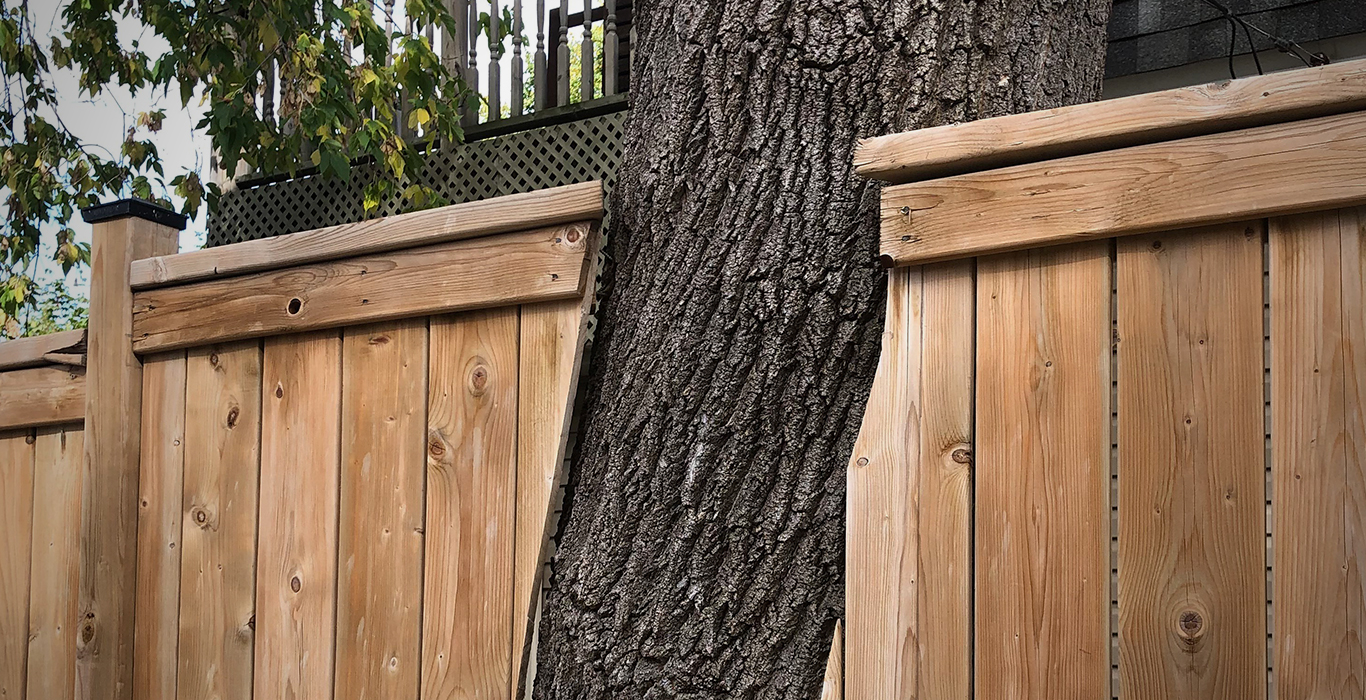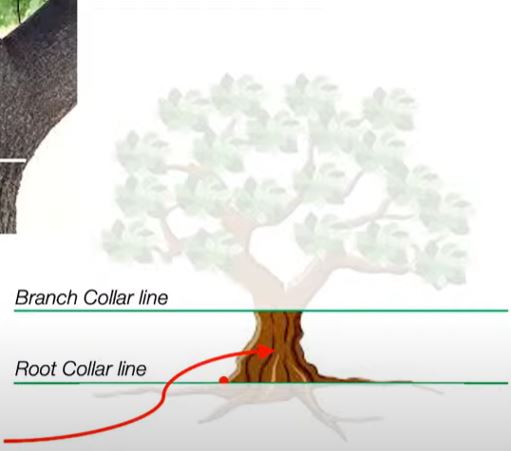Boundary Trees in Ontario

We know you’re looking for all things related to boundary trees, good for you. Let me tell you that you are in the right place because you’ll find all the information needed here. So, let’s get started.
Trees are essential to our natural environment, however, they are more than living beings, as they can be part of fond memories and might marl a special place on our properties as well.
Boundary trees can be a big deal because unlike structures such as sheds, garages, additions, or patios, trees are not man made cannot be modified to our desired specifications. Trees take decades to grow, and there is no way of knowing exactly where their roots and branches will spread.
What is a Boundary Tree?
A boundary tree occurs when the trunk of the tree is over a boundary line. This is a key distinction that determines the potential course of action, rules, by-laws, or legislation if the municipality gets involved in any scenario. As you can see in the following image, the trunk is the middle portion of the tree delimited by the Branch and Root Collar lines.
Who is responsible for Boundary Trees in Ontario?
If any part of the trunk (as shown in the picture above) is over the boundary, it is a Boundary Tree, meaning that ownership and responsibility are shared equally.
For example, if there is a maple tree on your property, and the trunk of this tree is a few centimeters over the boundary, then you do not have sole ownership of the tree and you cannot remove or alter the tree.
The tree is jointly owned between you and your neighbour, therefore, you and your neighbour have equal responsibility. While this may be considered unfair to some people, when it comes to Boundary Trees, there are processes and bylaws you must follow.
At this stage you might be wondering, who are the experts that will help you with your boundary tree:
- Arborist: Will tell you exactly where the root collar is on the side of the boundary in question
- Surveyor: Will tell you where the boundary is and show you the location of the root collar (if marked by an arborist).
- Municipality: They dictate your process and permit requirements.
Boundary Tree Law in Ontario
The Ontario Forestry Act defines what a Boundary Tree is and dictates the law that you cannot cut a Boundary Tree down without the consent of both parties (even if you have a permit from the City).
Every municipality in Ontario has a slightly different way of dealing with Boundary Trees. We must also make the distinction between Private and Public Trees.
- Private Boundary Trees: Are trees that are on the boundary between you and your neighbor’s property.
- Public Boundary Tree: Is a tree that is on the boundary of your property and a public one.
There are bylaws at the municipal level for private boundary trees, which govern removals, applications, permits, fees or inspections that every municipality deals with slightly differently. Additionally, there are processes to determine the status of ownership and rules dictating how you deal with a dispute relating to boundary trees.
Private trees that are wholly owned by you, are also under bylaws that govern what you can and cannot remove. Do not assume that since the tree is on your property, you can remove it or cut it down, there are processes dictating how you obtain permission to do so.
Can I cut down a Boundary Tree?
The short answer is no. If you do not have a consensus from both parties the implications and damage could be significant. A dispute could arise from your actions that will end up in court. Get in touch with your municipality to find out the bylaws and processes to follow.
Hopefully, we’ve solved all your doubts regarding Boundary Trees, however, please feel free to contact us for additional information.













